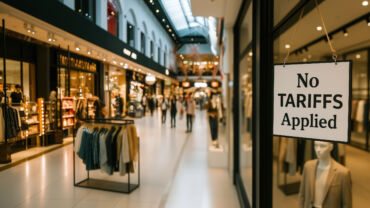Negotiations between MERCOSUR and Canada were formally launched on March 9th in Asunción – Paraguay, with the potential to be concluded in two years. Even though Brazil is in an election calendar year, it was decided to meet every 3 months, with the second round of negotiations having concluded last week.
This favorable scenario reflects the political willingness from both sides to improve the trade flow between one market of USD 500B of exports and MERCOSUR, which has 200 million potential consumers. Brazil has been stimulating its international environment since it is now clear that the economy of the future will no longer focus exclusively on domestic markets.
We would be remiss to forget the red tape prevalent in Brazil that creates issues, strongly apparent to the private sectors in terms of unavailability of the benefits granted by a newly signed FTA. Generally, after an FTA is signed, it does not produce any practical effects for the private sector before it’s formally introduced within the national legal framework; which can take more than 4 years, according to the National Industry Confederation.
The FTA signature should not be received with celebration, since there is still a long process to overcome before the private sectors can realize the practical results.
CNI evaluated 27 commercial agreements signed by the Brazilian government between 2000 and 2017, which had the approval of the National Congress. The agreements analyzed deals with a variety of economic issues and objectives of broad interest for the private sectors. What was noted is that from the moment the agreement is signed, it takes 349 days for congress to be informed. Then, it takes 808 days to be approved, with an additional 296 days until the effective edition of the presidential decree to insert the agreement into the list of legal acts, capable of producing the desired effects.
Challenges
During the negotiation process itself, we don’t see great concerns in terms of obstacles. Perhaps Brazil may face some hard times regarding the investment agreement, through which Brazilian investors could buy Canadian companies. Canada has included such a concession in the recent agreement with the European Union, which is expected to occur during the negotiations with MERCOSUR as well.
Another point that could be considered more of a challenge during the negotiations is the fact that Canada is an extremely experienced country in FTA negotiations. Canada generally adopts the NAFTA model in scope and structure during discussions of its agreements, which for Brazil will be something new; even though Brazil is quite experienced in large negotiations with many variables, most noted during their negotiations of MERCOSUR with the EU.
Some difficulties may arise later: If the FTA is signed, then, yes, Brazil will begin to face some obstacles of considerable relevance. Firstly, the country is in an unfavorable competitive position as there is an increasing number of countries benefiting from FTAs with Canada and entering the Canadian market in 90% of imports without payment of any tariff.
Trade Barriers
The study conducted by the National Industry Confederation revealed that Brazil has few products with potential market to Canada, because the competition is fierce, especially with USA, Mexico, Chile and Colombia. The institution believes that the entry into force of the agreement with the EU could exacerbate this situation. However, I estimate that Brazil is currently in isolation from the main players in the global market. That is, competition is an element of the free-market economy that has always proved favorable from the point of view of access to new markets.
Preferred Sectors
When we talk about what should be the preferred sectors of the agreement to be negotiated with Canada, we should once more refer to the CNI study that identified two groups of products with the most potential to be successful for Brazil in the Canadian market:
Group 1: Products already exported to Canada, but with minimal presence in the Canadian market;
Group 2: Products not yet exported to Canada, but with potential sales in the Canadian market.
In the first group there is a range of 66 products while the second group has 270 products. These products were listed based on a non-zero excise list.
In the first group we can see meat, sugar and wood furniture (basic products). In the second group, there is the emphasis on other agricultural products and food, footwear, chemicals, rubber and plastics, non-metallic mineral products, automobiles and other transport equipment (industrialized products).
The highest rates applied by Canada on imports from Brazil are among footwear and other transport equipment. In the context of a possible FTA there are several agricultural products of the two groups that would have immediate tariff liberalization, such as beef, juices, soybean oil, tobacco and corn. In the case of industrialized products, many them have immediate liberalization, except for vehicles and vessels, which have a period of relief that can vary between four and ten years.
Trade Flow
In 2017, only 0.3% of Canadian exports had the Brazilian territory as a destination, and Canada imported only 0.8% of Brazilian exports. In addition, trade between the two countries is concentrated in only 10 chapters of the HS schedule. The Top 10 chapters exported by Brazil to Canada cover 83% of its total exports, while, on the other hand, 10 chapters represent 87% of what Canada exports to Brazil.
FTAs would contribute to an increase of the trade flow between MERCOSUR and Canada. From one side, there is an enormous interest from Canada in making its diversification strategy more effective through the establishment of new trading partners. On the other hand, MERCOSUR is the fourth-largest economic bloc in the world, that is, a very good potential partner. After all, the opportunities are immeasurable, since the current deals between MERCOSUR and Canada are not very significant and this agreement would promote growth between both parties.






